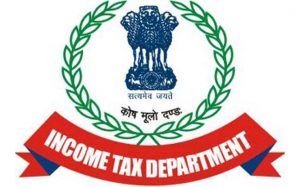Form 26AS/ Annual Information statement : Now more than history of just taxes paid of the Assessee! Full Financial details

“Question: Hey! What is your Tax History? Are you compliant and paying Income tax properly??
Tax Payers (before): I do pay taxes regularly, but I need to check withmy accountant whether there are any defaults with the tax department!
Tax Payers (now): Wait, I will provide my Form 26AS, it has all the information! You can check this. I am honest!”
I. Introduction
As the mandate of existing Form 26AS was required to be extended beyond information about taxes deducted and paid, government has introduced new section 285BB vide Finance Act, 2020 replacing the existing section 203AA of the Income Tax Act, 1961 (“the Act”) which will now allow the income tax authority to produce additional information which are necessary and to the extent is in the interests of Revenue in Form 26AS.
II. Old and New Provisions:
| Particulars | Old 26AS | New 26AS (“AIS”) |
| Name of Form | Annual Tax Statement | Annual Information Statement (“AIS”) |
| Applicable Provisions |
Section 203AA r.w. Rule 31 AB |
Section 285BB r.w. Rule 114-I |
| Time Limit to issue Form 26AS | It shall be issued upto 31st July of the Relevant Assessment Year (A.Y.). |
It shall be issued within 3 months from the end of the month in which the information is received by him But, no time limit w.r.t. information under Rule 114-I(2), i.e. information received from (i.)officer any other laws, (ii)foreign govt under information exchange agreement or (iii) any other person. |
III. What information would the AIS capture?
| Nature Information | Old 26AS | New 26AS (“AIS”) |
| TDS/TCS | Yes | Yes |
| Payment of Taxes | Yes | Yes |
| Refund Status | Yes | Yes |
| Demand Status | No | Yes |
|
Pending proceedings (assessments, penalty proceedings, appeals etc.) |
No | Yes |
| Completed Proceedings | No | Yes |
| Annural Information Report (AIR)/ Specified Financial Transactions (SFT) | AIR | SFT* |
|
Information received from the foreign government (under the Exchange of Information treaty) |
No | Yes |
|
Information received from officers under other law (GST Department, CBI, SFIO, SEBI etc.) |
No | Yes |
|
Information received from any other person (Tax Evasion Petition) |
No | Yes |
*SFT will contain details regarding various transactions exceeding various thresholds relating to purchase/sale of- goods, shares-securities and immovable property; rendering of services, works contract, cash deposits and withdrawals with banks, cash receipt in respect of sale of goods, etc. undertaken by taxpayer during the year as reported u/s 285BA with whom such transaction are entered into.
[Note: This powers are very wide and one will have to look at format and the extent to which such information of tax payer will be produced in Form 26AS.]
IV. Where will the AIS be available?
The AIS can be accessed from the e-filing portal of the taxpayer.
V. Comments:
Based on above, the notified new Form 26AS will bring out complete chart about the assessee in terms of its compliance under Direct tax. It will now become Income Tax Compliance Record of Tax Payer similar to what CIBIL Score analysis for checking Financial Status or like Birth Chart of a Person.
As the information would be regularly updated within 3 months of receipt of the information, the assessee would be more aware and gauze whether his case is likely to be selected in scrutiny.
In case of erroneous reporting, the assessee would be known within 3 months and in a position to reach out to the reporting entity to revise their SFT.
Impact on void transfers u/s 281:
Some transfers/charge of assets (such as land, building, FDs, shares, plant & machinery, sale of business (merger or secondary sale of securities), etc.) may be treated void u/s 281 of the IT Act if it is made during the pendency (or completion) of any proceeding of seller under the Act but before the issue of demand notice by the Tax Recovery Officer to him.
An exception to this rule is if the transfer is made for adequate consideration and without notice of pendency or without notice of tax demand. With the express inclusion of such details of pending & completed proceedings as well as demand status in the AIS, the purchaser would not be able to claim ignorance of proceeding and (or) demand of seller and request him to obtain prior permission from tax department before such transfer/charge.
The AIS will serve as a good tool to analyze the pending tax demand and undertake due diligence of taxpayer by banks while processing loan applications, other stake holders such as creditors, suppliers before providing credit, by due diligence professions during mergers and acquisitions.
This article is just for information purpose and are personal views of the author. It is always advisable to hire a professional for practical execution or you can mail us. If you need assistance you can ask a question to our expert and get the answer within an hour or post a comment about your views on the post and also subscribe to our newsletter for latest weekly updates.

About the Author:
Monark Padmani (C.A., B.Com.)
He is currently working as Assistant Manager – Direct Tax with Pathak H.D. Associates and LLP in Mumbai having experience in dealing Assessments, Litigation (like CIT, ITAT and HC), Search-Seizure Matters and Income Tax Settlement Commission.
E-mail: monark.p@phd.ind.in